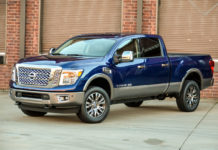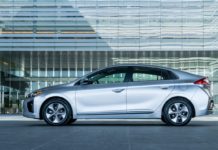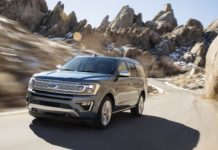Ever since the debut of the Toyota RAV4 in 1996, U.S. car buyers have been crossing over to crossovers.
The success of crossover vehicles, which resemble sport utility vehicles but are smaller and built on car instead of truck frames, has been one of the few bright spots in recent years for the troubled domestic automotive industry.
Analysts and auto executives say that trend likely will continue when automakers release July U.S. sales figures on Wednesday, although the general market decline is likely to continue.
The Edmunds.com automotive Web site forecast that automakers will sell about 1.37 million vehicles in July, a 7.9 percent drop from a year ago.
In a note to investors released this week, Bank of America analyst Ronald Tadross said he expected General Motors Corp. to report a 12 percent drop in domestic sales from a year ago. He estimated a 6 percent dip in sales for Ford Motor Co., 5 percent decreases for Toyota Motor Corp. and Honda Motor Co., and a 4 percent decline for Chrysler Group.
“We are not seeing any significant mid-month incentive actions” despite lagging sales, Tadross wrote.
The RAV4 was followed by other successful crossovers such as the Lexus RX300, Honda CR-V, Subaru Forester and Ford Escape. Foreign and domestic automakers developed 14 crossover models by 2000 and now offer more than 50. About 70 will be on the market by 2009, said George Pipas, Ford's top sales analyst.
It is the fastest-growing category in the industry, Pipas said. Ford's crossover sales for the first half of 2007 are up 40 percent versus a year ago — more than double the industry growth of 18 percent, he said.
On the other hand, industry-wide sales of SUVs this year are expected to fall below 2 million units for the first time since 1995, Pipas said.
Although high gasoline prices haven't hurt sales of crossovers, which generally are more fuel efficient than SUVs, they are not the sole reason for their success.
Crossovers are smaller and easier to get in and out of than SUVs, while offering better handling, a smoother ride and seating for up to eight people. They appeal to baby boomers who popularized minivans in the 1980s and SUVs in the 1990s but no longer need such large, cumbersome vehicles, he said.
“Many of us are becoming empty-nesters in this baby boomer generation,” Pipas said. “We don't need a vehicle as big as we once had.”
While Ford and GM dominated the SUV market during the 1990s, Honda and Toyota are contending for the top crossover title. In the first six months of 2007, crossover sales totaled 232,683 for Ford, 232,194 for GM, 230,012 for Honda and 201,114 for Toyota, according to data collected by Ward's Automotive Group.
Pete Nico, GM's vehicle line director for the Buick Enclave, Saturn Outlook and GMC Acadia crossovers, said they sold so well in June that the company couldn't make them quickly enough to satisfy demand. GM expects that trend to have continued in July.
The company announced Tuesday that it will add a shift at a factory near Lansing to increase production. Dealers are asking for seven times as many Enclaves as the plant could produce, Nico said.
He said buyers for the crossovers are coming from traditional GM buyers as well as about 43 percent from other automakers.
“We are getting them from everywhere,” Nico said. “We're getting minivan buyers. We're getting other mid-sized crossover buyers.”
GM's popular crossovers may not have been enough of a hit in July to offset weaknesses in other areas of the company's lineup, said Jack Nerad, Kelley Blue Book executive market analyst.
“It's certainly going to go a long way to help make things better,” Nerad said. “GM's got a lot of models, so positive movement there doesn't trump downward movement elsewhere.”
Based on consumer activity on his company's Web site, Nerad predicted that July likely will repeat June's performance — with lower overall sales in the U.S.
“This is striking me as not any kind of stellar month for anybody,” he said.
Besides crossovers, the only other vehicles that likely will have performed well in July are the smallest and least expensive of the small cars. These gas-sippers — with base prices in the $12,000 to $13,000 range — include such models as the Honda Fit, Toyota Yaris, Nissan Versa, Chevrolet Aveo, Hyundai Accent, Kia Rio and Scion xA, said Paul Taylor, chief economist for the National Automobile Dealers Association.
“They are cars that are very popular with younger buyers,” he said. “So the question is, is this a fashion or is this really the pursuit of the highest gas mileage in a non-hybrid vehicle? The answer, I believe, is that it's a little of both.”









